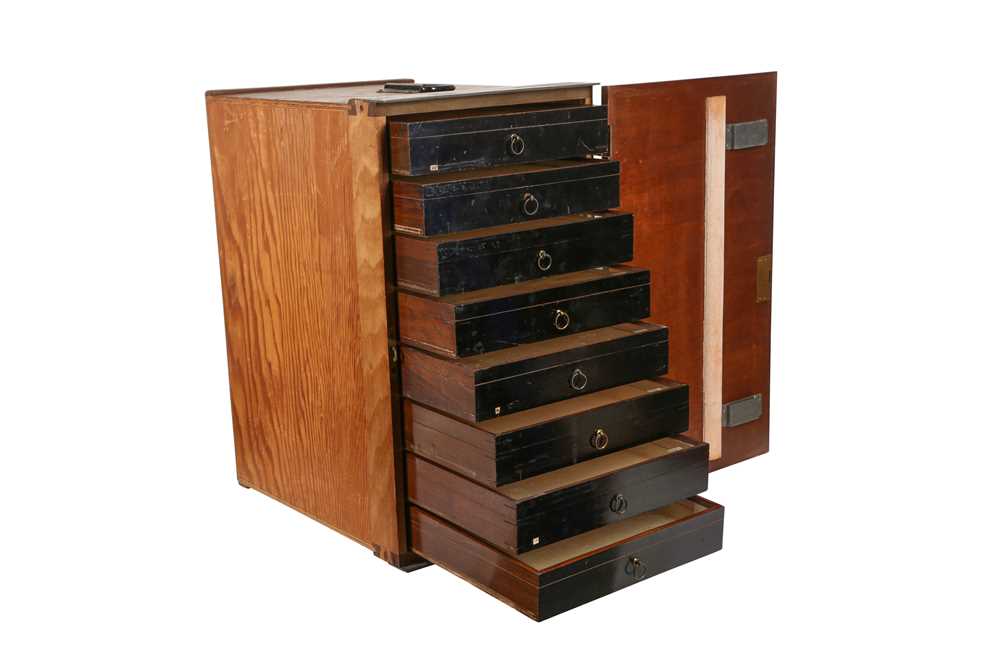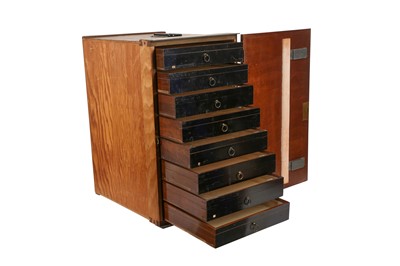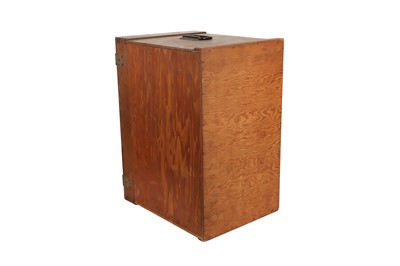26th Oct, 2021 11:00
From the Curious to the Extraordinary
A CABINET MADE TO SAFEGUARD SPECIMENS FROM LONDON'S NATURAL HISTORY MUSEUM DURING WWII
A CABINET MADE TO SAFEGUARD SPECIMENS FROM LONDON'S NATURAL HISTORY MUSEUM DURING WWII
an eight drawer, portable wooden specimen cabinet, specifically made to house the most scientifically important insect specimens from the Natural History Museum's (NHM) collection, so they could be easily transported to safe places outside London at the start of WWII.
cabinet: 55.3cm high x 32.4cm wide x 41.7cm deep. Drawers (external measurements): 37.9cm length x 29.4cm wide x 5.7cm deep
At the start of the WWII a decision was made to move many of the most important specimens in the NHM’s collection away from the danger of bombing raids in London. The original cabinets the specimens were in were far too large to easily move without damage. This cabinet was one of those made to house the irreplaceable pinned insect types (type specimens are those which were originally used to name a species and which act as the bearer of a species' scientific name). Once the type cabinets (as they are called) were filled with their precious cargo, they were transported out of London and carefully stored in places such as old mines in the countryside. Once the War was over, the cabinets were returned to the Museum, but it took many decades for the specimens within to be placed back into their original collection drawers.
This type cabinet has a metal handle on the top so it can be carried. The wooden door has brass hinges, an external brass label holder, and a brass lock, which lacks the key. The lock was made by Hobbs & Co. (London) in 1939, so it is likely that the cabinet is of the same date. The eight wooden glass-lidded drawers have metal loops as handles and slide on metal runners. Paper specimen labels are still attached to the bottom right corner of seven of the eight glass lids. The interior base of the drawers is cork sheet covered with white paper, which shows considerable wear and tear. The many small holes in the paper were made by the pins of the insect specimens. In some of the drawers it is possible to see the discoloured outline of specimen labels. The drawer interiors could easily be refurbished. The cabinet smells of naphthalene (moth balls) which was used to prevent pests from attacking the specimens.
This is a rare opportunity to acquire a specimen cabinet constructed especially for London's Natural History Museum, one of the most important natural history museums in the world. It could be used for insect, shell, rock or mineral specimens, or perhaps as your cabinet of curiosities.
Provenance: Legitimately acquired by the vendor directly from the museum.
Do you have an item similar to the item above? If so please click the link below to submit a free online valuation request through our website.




